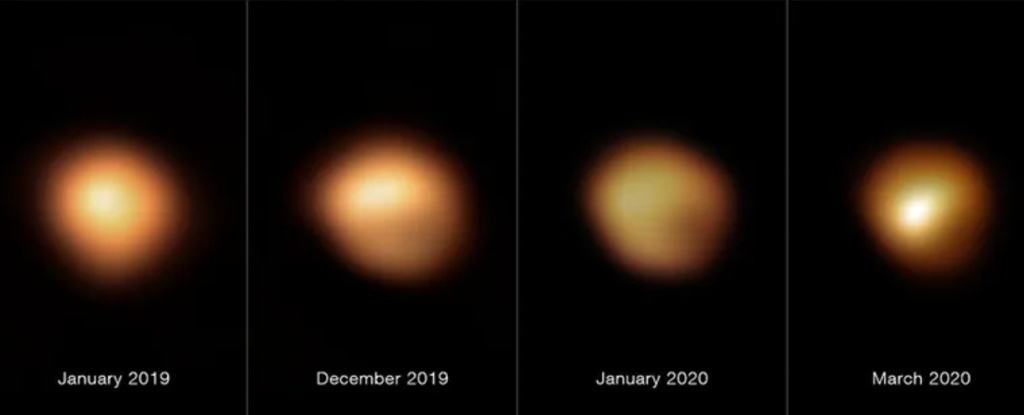Anyone who regularly watches the skies may well be familiar with the constellation Orion the hunter. It is one of the few constellations that actually looks like the thing it is supposed to look like rather than some abstract resemblance.
One prominent star is Betelgeuse and back in 2020 it dimmed to a level lower than ever before in recorded history. A team of astronomers have been studying the event with some fascinating results.
Betelgeuse is a red supergiant star almost 650 light years from Earth. With a radius of 617 million kilometres, if it were in the position of the Sun, then the orbit of Earth would be buried deep within its layers.
It’s also a variable star which means it varies its output of light and in the case of Betelgeuse this variability is semi-regular or in other words, regular with a few irregularities along the way!
Its variability is related to a pulsating of the stars radius which occurs over a period of around 400 days although there is a longer period of variability of around 2,100 days of uncertain origin, possibly linked to variation in convective flow.
Back in 2020 Betelgeuse dimmed to a level that had never been recorded in what has since been dubbed the “Great Dimming”.
Its visual brightness or magnitude, dropped by 1.6 although its dimming did not seem consistent across the star’s sphere; the southern hemisphere was much darker than the northern and there have been many theories put forward to explain the event.
Among them, large formations of star spots or dust clouds above the photosphere are favourite.
A paper published recently in Astronomy and Astrophysics by a team of astronomers led by Daniel Jadlovský explores the Great Dimming event using 15 years of data from the STELLA robotic telescope.
The STELLA system comprises two robotic telescopes in Spain coupled with a high resolution spectrograph and a wide field imager.
The data allowed the team to explore the photosphere (visible layer) of Betelgeuse in incredible detail. They were able to gain valuable insight into the radial pulsations, shockwaves and how they passed through the photospheric layers.
Five distinct layers of the photosphere were identified using the tomogrpahic technique – a method where images are constructed form a series of projections.
Analysis revealed that the variations in the innermost photospheric layer, known as C1 was in line with the timescales of the visual magnitude variations.
Shockwaves travelling through the layers also seemed to be broadly in line with the brightness variations.
In regards to the Great Dimming vent of 2020, the data showed two powerful shock waves in the photosphere, the first likely to be the cause of a major outflowing of material which caused an infall of all layers.
As the infall reached maximum velocity the second, more powerful shockwave occurred leading to the a significant outflow of material.
Due to the different photospheric layers, these events didn’t happen simultaneously across them all and it wasn’t until early 2022 that Betelgeuse settled back down.
This article was originally published by Universe Today. Read the original article.

Dr. Thomas Hughes is a UK-based scientist and science communicator who makes complex topics accessible to readers. His articles explore breakthroughs in various scientific disciplines, from space exploration to cutting-edge research.








